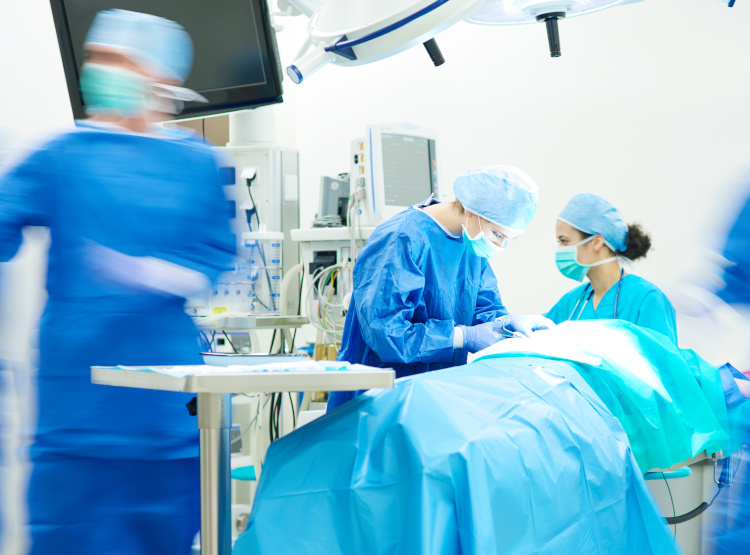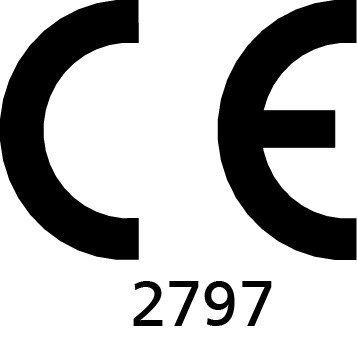Sharps Safety in Operating Rooms: A Review of Surgical Blades
01 Nov 2021

In health care, sharp instruments (or medical sharps) are any objects that can prick or cut, causing injury to the user. This term covers such things as needles and scalpel blades, as well as glass. The nature of these tools makes unintended injuries to health care workers an ever-present risk, especially in a surgical setting.
Sharps injuries to health care workers can occur in a variety of contexts. A sharps injury could occur in the middle of a procedure, via accidental collision or during the disposal of a used sharp. These injuries occur most often in wards and operating theatres but also occur outside of hospitals, at health centres, or during the administration of domestic care.
Unfortunately, despite ongoing efforts to reduce injuries, both health workers and patients remain at risk.
In this article we:
- Define sharps injuries occurrence in the operating room or theatre.
- Review percutaneous injury and the risks they present to medical teams inside operating environments.
- Outline best practices for reducing sharps injury inside the operating room.
- Review, compare and contrast the use of safety-engineered devices and how they can help combat and reduce risk inside theatre.
- Consider the Swann-Morton range of sharps safety products that can support hospital teams and reduce risks associated with medical sharps.
Sharps Injury inside Operating Rooms
In operating environments, the 2009 Exposure Prevention Information Network (EPINet) report indicated Operating Rooms accounted for 35.5% of all sharps injuries –making it the highest category of risk, overtaking Ward based injury.
This risk is exacerbated by the nature of operating room environments, requiring multiple health care worker co-ordination in surgical procedures – often in confined spaces and under pressurised situations.
Pooled reporting from 99 Hospital facilities reporting to Massachusetts Department of Public Health (2004) found that 33% of sharps injuries occurred in theatre. Of these, 50% of injuries were sustained by physicians.
Technicians incurred 25% of injuries, while a further 20% affected nurses. Of injuries attributed to the Operating Room, 25% were due to collisions with colleagues or sharps.
What are Percutaneous Injuries?
Background
A percutaneous injury is defined as any injury that penetrates a health worker’s skin.
The risks here are elevated if the tool involved has been contaminated by a patient’s blood. This can lead to percutaneous exposure to bloodborne pathogens.
The infectious risks here include Hepatitis B or C, and HIV.
In the European Union/European Economic Area (EU/EEA) approximately 9 million people are chronically infected with hepatitis B virus (HBV) or hepatitis C virus (HCV) with a further unknown number of undiagnosed cases. (1)
This risk also relates to patients. The NHS Hepatitis C Infected Health Care Workers guide states that there were five incidents in which hepatitis C infected health care workers had transmitted infection to 15 patients. This, despite existing policy advice from the Advisory Group on Hepatitis (AGH) on the subject.
The HSE also present the stark risks associated with percutaneous injury. Risk of infection estimated as high as 30% for Hepatitis B, 1-3% for Hepatitis C and 0.3% for HIV.
Scalpel Blade Percutaneous Injuries
Of all operating room injuries, scalpel blades account for a lower percentage of injuries than needlestick, but can be seen as high risk due to their percutaneous nature and further risk of longer-term mechanical injury.
Scalpels have the further potential to inflict deeper wounds than needlepoint injuries. The potential for mechanical injury also makes accidents involving scalpels dangerous and disruptive with potentially more expensive compensation and rehabilitation costs.
The risks from scalpel blades represent a significant area of concern in healthcare and one that can benefit from improvement:
- A quarter of all percutaneous injuries are sustained in the operating theatre; scalpels are the second most frequent cause of injury, after needles. (2)
- Massachusetts sharps injury surveillance system data, 2004 conducted by the Massachusetts Department of Public Health (MDPH) found that scalpels accounted for 12% of injuries with Technicians suffering the most number of scalpel specific percutaneous injuries, followed by Surgeons and Nurses.
- The same study highlighted up to 27% of sharps injuries in the OR occur in situations that have strong potential for primary prevention. These injuries occur during handling or passing equipment, clean-up, and improper sharps disposal or procedure methods.
- Policies and procedures governing the use and disposal of scalpel blades are highly variable and are inconsistently followed. (3)
- The operating theatre is a unique environment in which many healthcare professionals work in close proximity, often over long periods, and often under emergency conditions. (4)
Best Practices for Minimising Scalpel Percutaneous Injury in the Operating Room
But how do these injuries happen and how are they minimised? Injuries are essentially most likely in the following situations:
- During usage of the scalpel
- After use but before disposal
- Between procedural steps
- During disposal
- When activating safety-engineered devices
As the majority of scalpel injuries affect non-surgeons, it is important to consider the dangers posed by the passing and disposing of medical sharps specifically.
In fact, numbers from the Massachusetts study alone suggest that almost 70% of scalpel injuries occur after use - identifying passing, assembly/disassembly and disposal as key areas for focus.
In response to such dangers, medical facilities can develop a variety of safe practices to minimise their occurrence:
Neutral Zone / Hands-Free Passing
Make use of a ‘neutral zone.’ The neutral zone represents a reliable way to reduce scalpel injury in operating room environments using the Hands-Free Passing Technique.
Fuentes et al found that approximately 50% of scalpel injuries were preventable using the HFPT. (5) This statistic is further emphasised by the fact that the other 50% were non-preventable i.e. they occurred during usage.
A neutral zone such as a metal tray is an area chosen for the placement of sharps during surgery, lowering the amount of person-to-person passing and is one of the most seamless and economical ways of implementing the hands-free passing technique (HFPT) in the operating theatre.
Use Blade Handling & Disposal Safety Devices
Risks to non-surgeons can also be reduced through the proper handling and disposal of sharps. Safety devices are proven to help reduce injury:
MDPH found that injuries during or after disposal most frequently involved scalpel blades (30%).
Fuentes et al recommended the use of a single-handed scalpel blade remover in combination with an HFPT / neutral zone as this can potentially prevent 5 times as many injuries as a safety scalpel. (6)
Products widely available to support operating room staff include:
- Single use blade removal devices.
- Blade removal and disposal combination systems.
- Sharps containers.
- Magnetic drapes, metal trays and sharps recovery equipment.
- PPE equipment including gloves and goggles.
- Safety engineered scalpels.
Effective Theatre Policy & Staff Training
Training, risk assessments and operating room policy can play a role in reducing sharps injury:
- Emphasising verbal communication can help physicians and nurse’s coordinate passes.
- Regular risk assessments can help flag potential hazards and plan effective responses to incidents, as well as help eliminate unnecessary risks entirely.
- Training on the safe attachment and removal of surgical blades can ensure best practices are adhered to at all times. Training on the use of safety-engineered devices can help increase activation rates and reduce usability issues when in use.
- A well-defined and widely available sharps safety theatre policy will help identify and clarify risks and reinforce safety procedures and protocols.
Effective P.P.E
The use of personal protection equipment can clearly play a role in sharps injury reduction. Specifically Goggles and Gloves.
The most common area of injury is the hand according to the EPINet 2009 report - with 57% of injury superficial with little or no bleeding.
Health care workers' eyes were identified by Jagger et al as being the most vulnerable location for serious blood exposures. (7)
How Can Safety-Engineered Devices Help Reduce Sharps Injuries?
Safety engineered devices are intended to reduce the risk of percutaneous injury during and after their use through the design of the product itself. These devices are of two kinds: active and passive.
A 15-month, six-hospital study of OR exposures conducted jointly by the International Health Care Worker Safety Center and the Association of periOperative Registered Nurses discovered that a high proportion of percutaneous injuries were potentially preventable if safer devices had been used. (8)
An active safety device requires some action on behalf of the user to activate the safety feature; this could mean flipping a switch or clip, sliding a sheath, or applying extra force via button press. A passive safety feature would be one that requires no action on behalf of the user; it could be said to be ‘always on.’ Most scalpel engineered safety devices are classified as active.
Studies on Device Efficacy
Studies have shown conflicting conclusions on the efficacy of safety engineered devices in driving down sharps injuries. The below table summarises the argument for and against such devices from various studies on the subject:
| For | Against |
|---|---|
| Reduced touchpoints; Safety engineered devices provide a clear path to the reduction of sharps injury given they are designed to reduce the number of touchpoints associated with sharps injury - specifically safe passing, removal and disposal. | Patient safety; Surgeons feedback over concerns of the devices usability during surgery with the potential to obscure vision and reduce touch and feel. |
| Injury Reduction; Studies indicate that safety-engineered devices can play a key role inside the operating room. | Cost; Safety engineered devices are more expensive than cheaper safety solutions such as HFPT / blade removal systems. |
| Technology; Feedback from surgeons has allowed the healthcare industry to improve the design and usability of safety-engineered products. Safety-engineered devices are now available using standard surgical handles for example to help promote an ergonomic feel. | Activation and Training; Research provides evidence of sub-optimum activation rates as well as injury during attempted activation. Use of safety-engineered devices may require specialist staff training which provide logistical issues for hospitals and trusts. |
| Cost effectiveness; independent studies showing the overall cost effectiveness of these devices in preventing costly injuries. | Alternatives; Related safety products and procedures such as HFPT provide comparably effective ways to reduce sharps injury without needing to invest in specific safety engineered devices. |
| Multi-use; procedures requiring multiple passing between surgeon and nurse can be supported more easily. | Counterproductive; Safety engineered devices can be argued as being potentially counterproductive in that usage can increase hazards through misuse or from poor training and/or limited usage experience. |
| Impact; Studies have shown that the impact from safety-engineered devices can be short-lived with injury rates returning to previous levels. |
Swann-Morton Scalpel Safety Solutions
Swann-Morton supports the use of our surgical blades in theatre with a range of safety products designed to help reduce risk and injury amongst healthcare professionals. Below is a short summary of the products we are able to provide.
Kleen Blade Management System
The Kleen Blade System is compatible with a wide variety of scalpel blades sizes. The system which incorporates a quality Swann-Morton surgical blade is designed to operate with most No.3 and No.4 standard surgical handles already in circulation within the hospital system; thus minimising disruption and cost during the conversion process.
Watch the Kleen Blade Management video here.
Blade Removal Devices
Single Use Blade Removers
Supplied sterile it allows the device to be included on the instrument tray within the OR and to be used at the site of the invasive procedure. 100% accountability of the blades used during the surgical procedure, each one safely encapsulated within an individual remover which may then be disposed of in an appropriate sharps bin or container.
Qlicksmart BladeFlask
This world-first single-handed scalpel blade remover helps prevent injuries commonly caused by removing blades with fingers, forceps or re-sheathing. Installed with bracket, BladeFlask can be installed on walls, benches and trolleys inside the operating room. Simply insert the surgical scalpel post-procedure for a seamless blade removal process.
Qlicksmart Blade Cassette
With the single-use BladeCASSETTE you can simply push and click to change and contain up to 3 blades during a procedure without risking the other hand. Improves staff safety by ensuring the used scalpel blade is removed with a safe single-handed technique and then safely contained until final disposal.
Qlicksmart BladeSingle
For a single blade use BladeSINGLE adopting a simple push and click action to change and contain blades.
You can learn more about these products by visiting our website here:
- Learn more about our single use blade removers.
- Learn more about Qlicksmart safety solutions.
Can Swann-Morton Provide Further Safety Information?
Alongside our safety-engineered and sharps safety products, Swann-Morton offers a free training portal addressing the use of traditional and safety scalpels, as well as all aspects of sharps injuries.
The training on offer is AFPP approved, and touches on all aspects of scalpel use and safety, from handling instruments, to risk factors and legal frameworks. On the portal, you’ll find plenty of free information, as well as the opportunity to acquire training credits for your professional development.
References & Citations
(1)
Tavoschi L, Mason L, Petriti U, Bunge E, Veldhuijzen I, Duffell E. Hepatitis B and C among healthcare workers and patient groups at increased risk of iatrogenic transmission in the European Union/European Economic Area. J Hosp Infect. 2019;102(4):359-368. doi:10.1016/j.jhin.2019.03.004
(2,3,4)
Watt AM, Patkin M, Sinnott MJ, Black RJ, Maddern GJ. Scalpel injuries in the operating theatre. BMJ. 2008;336(7652):1031. doi:10.1136/bmj.39548.418009.80
(5,6)
Fuentes, Hector et al. ‘“Scalpel Safety”: Modeling the Effectiveness of Different Safety Devices’ Ability to Reduce Scalpel Blade Injuries’. 1 Jan. 2008 : 83 – 89.
(7, 8)
Jagger, J., Bentley, M., & Tereskerz, P. (1998). A study of patterns and prevention of blood exposures in OR personnel. AORN journal, 67(5), https://doi.org/10.1016/s0001-2092(06)62623-9
2009 Exposure Prevention Information Network (EPINet) report - https://internationalsafetycenter.org/wp-content/uploads/reports/2009-Needlestick-and-Sharp-Object-Injury-Report.pdf
NHS Hepatitis C Infected Health Care Workers guide - https://www.nhs.uk/livewell/hepatitisc/documents/hep_c_infected_healthcare_workers.pdf
SHARPS INJURIES in the OPERATING ROOM MASSACHUSETTS SHARPS INJURY SURVEILLANCE SYSTEM DATA, 2004 - https://www.mass.gov/doc/sharps-injuries-in-the-operating-room-2004-0/download
Advisory Group On Hepatitis - https://www.gov.uk/government/groups/advisory-group-on-hepatitis
Risks to healthcare workers – Health & Safety Executive https://www.gov.uk/government/groups/advisory-group-on-hepatitis








